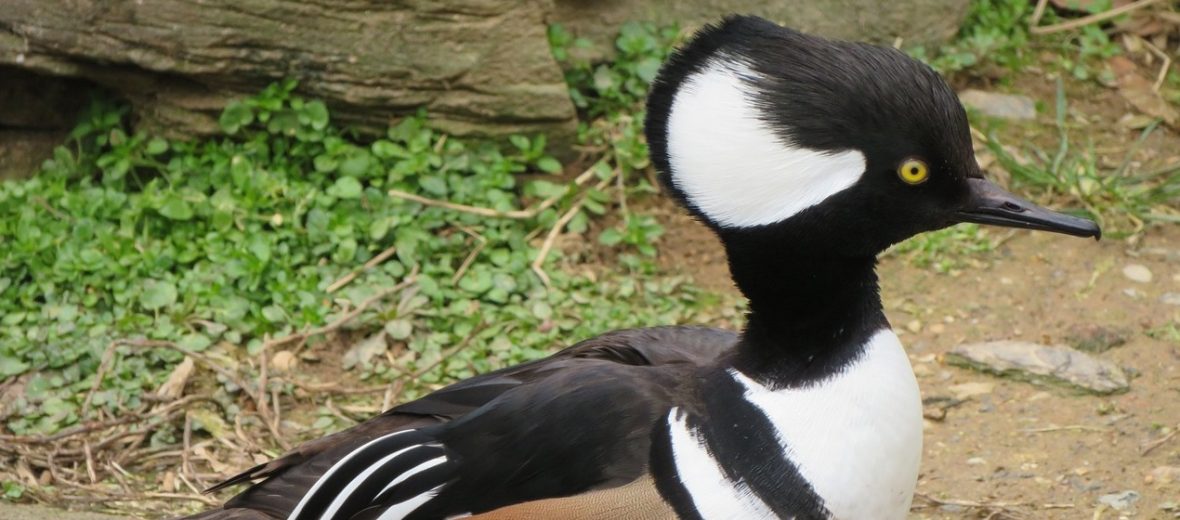
The hooded merganser can be found through Canada, United States, and the northern tip of Mexico. These are the second smallest merganser, after the smew of Europe and Asia. These water birds prefer smaller estuaries, ponds, impoundments, large wetlands, rivers, and flooded timberlands. With an increasing population of an estimated 1,100,000 wild individuals, these birds are listed as Least Concern by the IUCN. They do face the threats of habitat destruction and loss at the hands of agriculture and deforestation.
First the Stats…
Scientific name: Lophodytes cucullatus
Weight: Up to 1.5 lbs.
Length: Up to 1.6 feet
Wingspan: Up to 24 inches
Lifespan: Up to 13 years
Now on to the Facts!
1.) A group of mergansers is called a bunch, flock, badelynge, brace, paddling, or raft.
2.) Hooded mergansers are reclusive birds that can only be seen in smaller flocks or in pairs.
3.) They are diurnal (active during the day).
4.) These are diving birds that hunt for prey via sight.
5.) If they need to vocally communicate, they do so via croaking and quiet grunting sounds.
But wait, there’s more on the hooded merganser!
6.) Most populations of hooded mergansers migrate to warmer climates for the winter. But there are some populations that don’t migrate. Those populations are located in Washington state, southern British Columbia, on down to northern Idaho.
7.) Their primary prey of choice is fish. However, they will also prey on crabs, crayfish, and a variety of aquatic insects.
Did you know…?
Hooded mergansers are among the fastest flying ducks as wells as 1 of the quickest divers. They can reach flight speeds of up to 50 mph!
8.) These birds are monogamous in that they will stay together until the female has selected a nesting site (cavity) and completed laying her clutch of eggs. After that, the male will leave the female to incubate and tend to their brood.
9.) Nesting sites they prefer are natural cavities in trees or nesting boxes, up to 15 feet off the ground.
10.) Females lay up to 15 eggs that hatch in up to 1 month.
But wait, there’s still more on the hooded merganser!
11.) Ducklings are born precocial (self sufficient) and leave the nest in just 24 hours after hatching.
12.) The ducklings are quickly able to swim and hunt and can fly in up to 70 days.
Did you know…?
Due to the positioning of their legs (being set farther back than other aquatic birds) they are excellent swimmers, but rather clumsy on land.
13.) The genus name “Lophodytes” hails from the Greek language and is broken down to 2 parts: lophos translates to crest and dutes translates to diver. So, crested diver.
14.) These aquatic aviators can remain submerged for up to 2 minutes at a time.
15.) In a clever attempt to thwart aerial predators, the ducklings will swim in a tight bunch that resembles a swimming muskrat.
Now a Short Hooded Merganser Video!
Be sure to share & comment below! Also, check out the Critter Science YouTube channel. Videos added regularly!
Want to suggest a critter for me to write about? Let me know here.



